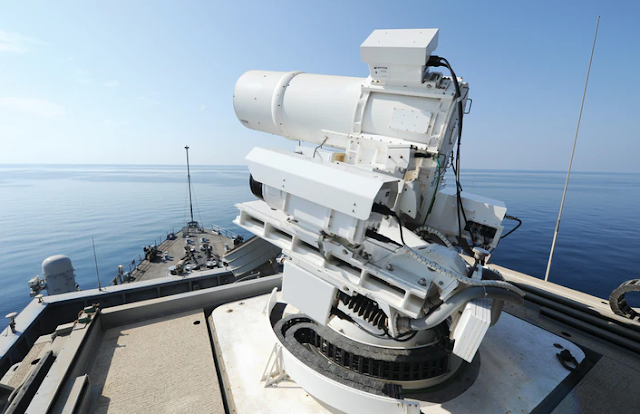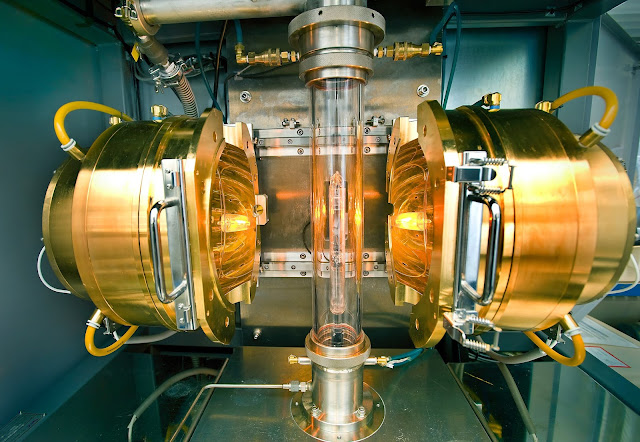Electromagnetic pulse: today's weapon:
In the modern world we are surrounded by sophisticated technology that has the ability to control and monitor finance, electricity, travel and communications. The United States overcame a surface nuclear test in the South Pacific in 1962 to expose the world to the dangerous side effects of gamma rays, which are electromagnetic pulses. In today's world, nuclear weapons are considered unnecessary in addition to deterring an aggressive enemy or self-defense. Now the world is moving towards the practical use of weapons for targeting using high tech. Another high-tech product is the electromagnetic pulse or EMP. The electromagnetic pulse has been described as a weapon that could potentially threaten national security. EMP can be made in two traditional ways: microwave emission and overhead nuclear explosion. High power microwave electromagnetic energy can be produced as a direct pulse by special electrical devices that convert battery power into intense microwaves that are very harmful to electronics falling in a very small area. The electromagnetic pulse is an instantaneous electromagnetic field produced in the atmosphere by the radiation and force of a nuclear explosion. Damage to electrical equipment by EMP also covers a large area, but depends on the design of the device and the height of the burst. The essential contract for the preparation of EMP is the ionization of air molecules by gamma rays produced by nuclear explosions.
The electromagnetic pulse of high altitude and high power microwave technology has advanced to the point where electromagnetic bombs are becoming viable. EMP is not radioactive, as stated, it is a pulse formed as a side effect of an electromagnetic or atomic bomb blast. It is also claimed that EMP has no direct side effects on animals. It is mainly used to permanently or briefly disable electrical and electronic devices because electromagnetic energy travels at the speed of light. Most electrical systems are controlled by semiconductors and fail to communicate with the EMP. Failure of semiconductors could potentially destroy the railway, industrial, telephone, water and electricity systems. The EMP has the ability to destroy or burn pathway electronic devices. The EMP weapon is capable of offering an army lead in combat and can have very deadly effects on the battlefield. The length of the developed EMP is meters and kilometers. The reach of an EMP bomb depends on its size and output power source. The US Air Force Laboratory has developed an EMP called the Counter Electronics High Power Microwave Advanced Missile Project or CHAMP. CHAMP is capable of exploding high-frequency energy, destroying anti-frequency data and electronic systems. An EMP device can be small enough to fit a regular-sized briefcase. The bomb is thought to be designed to deter or defeat an enemy with a nuclear collision.
The smallest EMP devices are powered by AA batteries and have the ability to program circuitry in a computer system up to 15 meters away. Electromagnetic pulse weapons are much larger in scale than microwave emission pulses. The technology used for Microwave Plus is so low-level that non-state actors or organizations can recover or damage the computer. Other states, such as Russia and China, are also in the race to develop EMP weapons capable of destroying electronic devices and systems. According to the Russian news agency, TASS, the Russian EMP weapon, known as the EMP cannon, produces a high beam of electromagnetic pulse that can travel up to 10 kilometers against air targets. can do. TASS further explained that targets generated by aircraft can be removed within a range of 10 km as exposure to heat and electromagnetic energy burns their electrical system. Russia aims to install EMP cannons in the unmanned version of the Russian sixth-generation fighter jet, as the risk is too high for EMP cannons to be mounted on a single pilot aircraft. The United States has accused Russia of quietly exposing electromagnetic waves to several US troops and diplomats inside and outside Russia. There have been reports of severe headaches and nausea, later renamed "Havana Syndrome". There is no evidence that Russia is behind such exposure to US diplomats. The United States has banned microwave radiation from the U.S. embassy in 1953, leaving the U.S. diplomat's white blood cells abnormal and with many health hazards, comparing the situation from 1953-79. The United States claims that a fire broke out in the block in front of the US embassy in Moscow and that no radiation was detected. By July of that year, microwave radiation was detected again and another fire broke out in the same block. There are two explanations given by the United States that Russia has been using the EMP as a weapon against them for years: one is the idea that the micro- Using Wave or whether they were used for freezing or burning. US Power Project Despite all theories and allegations, it has not been proven that Havana syndrome is caused by electromagnetic radiation.
The U.S.
military first began to research the use of lasers in combat in the late 1950s,
but it was not until 1973 that the first U.S. tactical laser, the Mid-Infrared
Advanced Chemical Laser (MIRACL) — a megawatt deuterium fluoride (DF) laser
built by TRW — was tested against aerial targets. Five years later, the Air
Force Weapons Laboratory at Kirtland Air Force Base, N.M., developed the first
chemical oxygen iodine laser (COIL). A wide range of lasers have been developed
since then, including solid-state lasers and free-electron lasers.
Electromagnetic
weapons offer the advantage of scalability — from microwaves that heat the skin
to make the target extremely uncomfortable but without injury, to high-power
electromagnetic weapons that can destroy an enemy ballistic missile in flight.
The potential
for such weapons, which could disable an enemy’s ability to fight without
killing or wounding anyone — especially nearby civilians — has made their
creation and deployment a major goal. Involved in this kind of research are the
U.S. Defense Advanced Research Projects Agency (DARPA) and the service labs —
Air Force Research Lab (AFRL), Naval Research Lab (NRL), and Army Research Lab
(ARL) — as well as the subject of considerable academic and corporate research,
as the technology also has applications from medical to manufacturing.

Electromagnetic pulse: today's weapon
EMPs can
be naturally occurring from solar activity, or man-made, such as the EMP
discharged by the explosion of a nuclear weapon. Both can have devastating
effects on whatever area they envelop, from permanently disabling satellites in
orbit to “frying” smartphones and other electronics with no possibility of
repair.
What was
still considered science fiction in the 20th Century is fast becoming military
reality in the 21st. Some, such as handheld “rayguns” are still a while off,
and will require major advances in the size and longevity of small form factor
power systems. Still, what only a few years ago required a military 747 to
carry now is being fitted on Stryker combat vehicles and unmanned aerial vehicles
(UAVs).
China has also recently been accused of using microwaves against
Indian troops in the Himalayan range. Healthy Indian soldiers reportedly
suddenly began to feel weak and violent vomiting. According to Professor Jin
Canning at Renman University in Beijing, China used microwave energy and
exposed Indian soldiers to high-frequency electromagnetic pulses that increased
their body heat, causing them to feel anxious and restless. Happened Using this
technique, China turned the top of the Himalayan mountain into a large
microwave that endangered the lives of Indian soldiers so that they could be
cooked alive inside. It made the hilltop compound unsafe for Indian troops to
capture without firing a single shot at Indian troops. India has dismissed the
report as "fake". It is also reported that the use of EMP radiation
is China's "first strike" melting and burning capacity and the entire
US power grid. It is believed that the effects of exposure to EMP energy do not
last long and last for weeks. Although EMP weapons require high-tech and
advanced power systems, they are still less expensive than fifth-generation
aircraft carriers.

